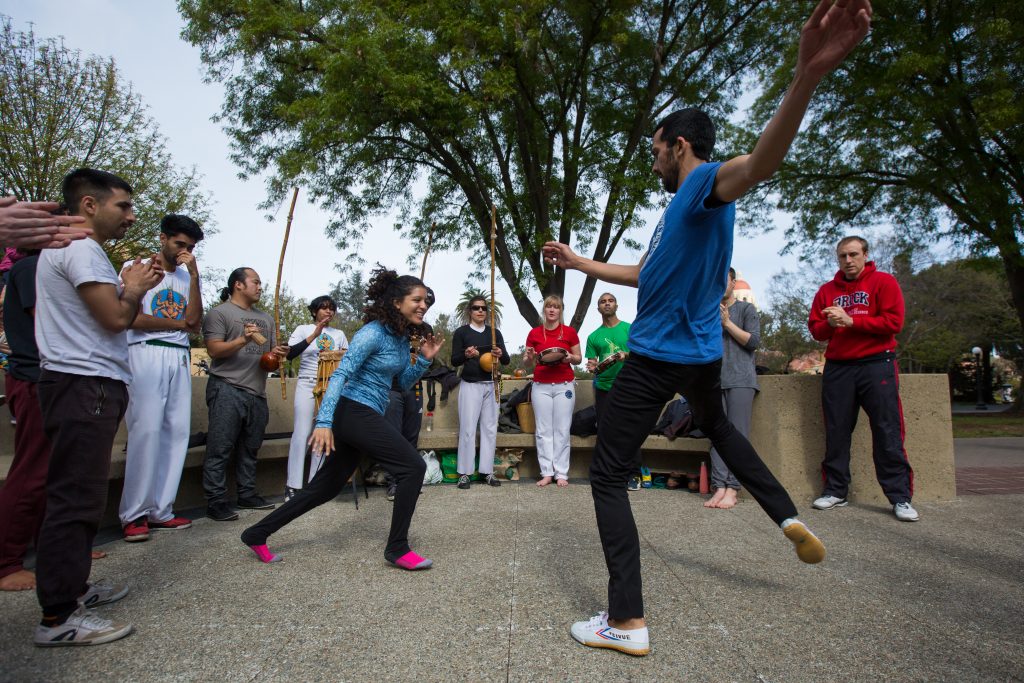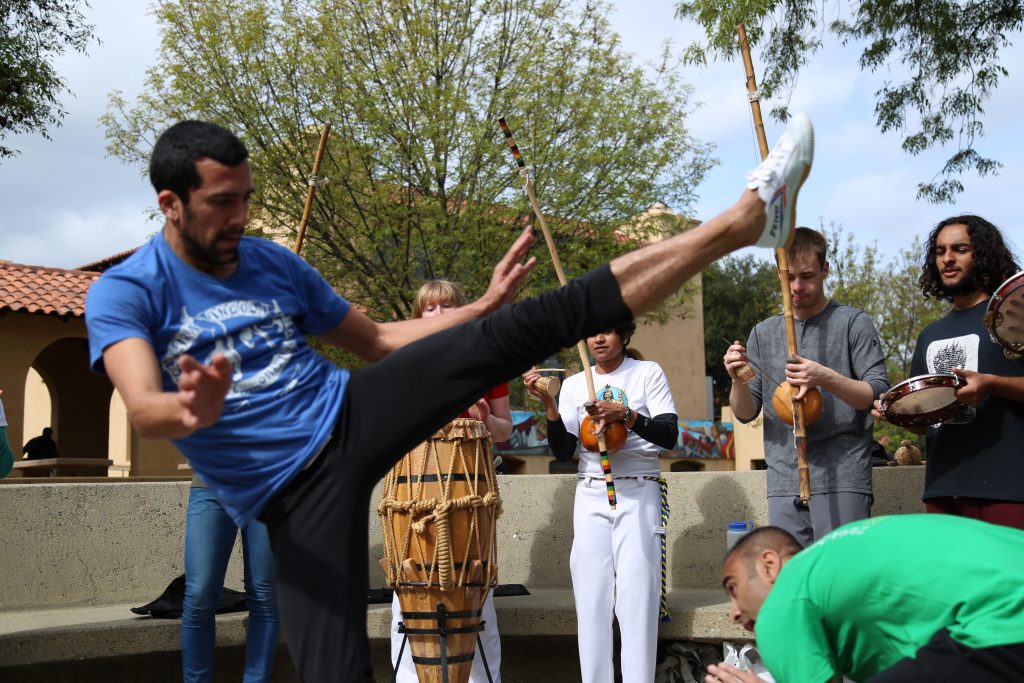The fighters circle around each other, eyes locked. One throws a swift kick at her opponent, who spins and ducks away. The pattern continues: spin, kick, escape. They’re ringed by onlookers who clap and sing to the rhythm of tall drums and the berimbau, a musical bow with one string that produces a thick twang.
The fighters are sparring, but they’re also dancing. They are in the jogo de capoeira, which means the game of capoeira in Portuguese.
“The idea of jogo is a continuous ebb and flow,” says Amara Tabor-Smith, a Bay Area choreographer and modern dancer who first trained in capoeira in Brazil.
Capoeira is an Afro-Brazilian martial arts form that has laid deep roots in the Bay Area over the past four decades. On any given weekend, members of capoeira academies and clubs gather in different cities in the Bay to play and sing for hours inside the roda, which translates to circle.

Centuries ago, capoeira was developed by African slaves of the Portuguese colony in Brazil. Though theories about the history of the martial art vary, Tabor-Smith says, capoeira was a survival tool to resist oppression.
In the 1930s, capoeira was formalized into different schools by a few capoeira masters in Brazil. Since then, their students have carried those traditions around the world, some landing in the Bay Area. To this day, students of capoeira sing about those famed mestres and invoke the mestres’ names to identify themselves to others.
“It’s an embodied history,” said Tabor-Smith, who taught an introductory capoeira course at Stanford University this past winter and is a lecturer at University of California, Berkeley.
“You can see somebody’s lineage through the way they play,” Tabor-Smith said.
SPECIAL THANKS to Professor Sereno and his students, Professor Tico Lua Branca, Mestre Itabora Ferreira and the Institute of Brazilian Fitness, Megha Makam and members of Stanford Capoeira, Amara Tabor-Smith and her students, the participants of the Vadiando 13 roda at First Congregational Church of Oakland and the participants of the Silicon Valley roda at Stanford University.

How this video was made:
This video was shot with the Samsung Gear 360 and Insta360 Pro cameras and edited in Adobe Premiere Pro CC. The video was not visually altered in any way, besides color correction. Audio was sourced from the same events that were filmed and from an interview with Amara Tabor-Smith. In the final scene, the capoeirista was prompted to play directly with the camera.
